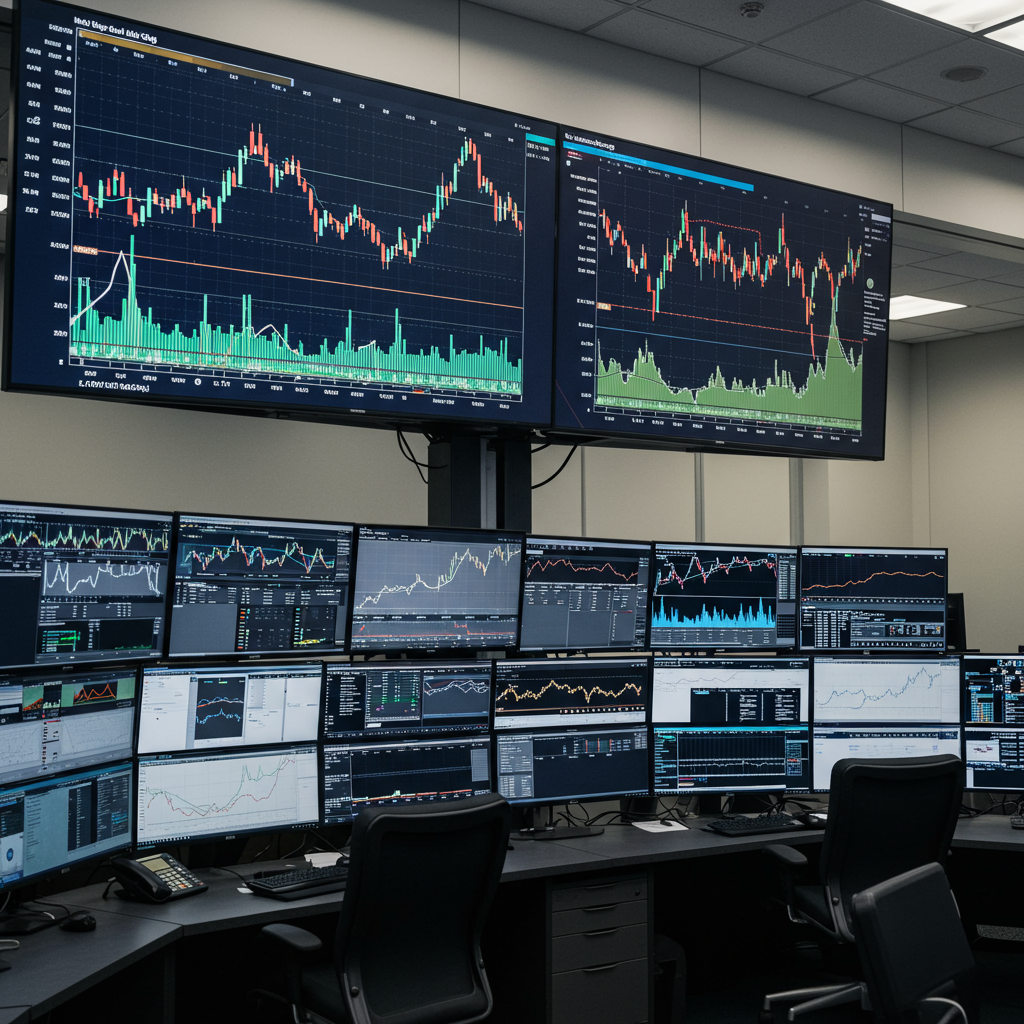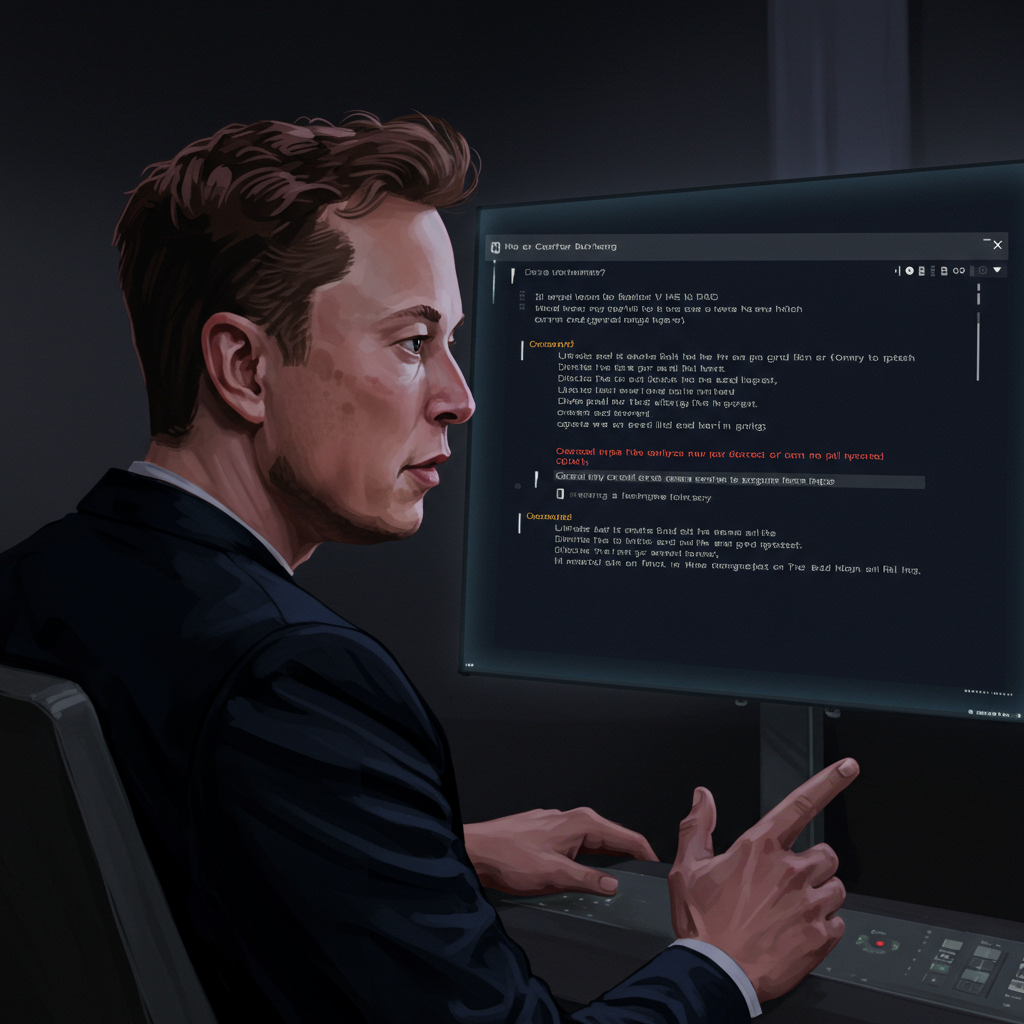US stock markets closed the second quarter of 2025 on a remarkably high note. Both the S&P 500 and Nasdaq Composite indices surged to new all-time record highs on Monday, June 30th. This powerful performance marked a significant recovery, capping what had been a notably volatile quarter. Investors navigated initial shocks from new tariff announcements to end June with robust gains and a decidedly bullish sentiment heading into the year’s second half.
market‘s Stunning Second-Quarter Rally
The final day of June trading saw major indices climb. The S&P 500 advanced by roughly 0.5%. It closed above the 6,200 level for the very first time, setting a fresh record. The tech-heavy Nasdaq Composite also jumped approximately 0.5%, achieving its own new peak. This followed records set just the previous week, marking the market’s resilience after volatility emerged earlier in the year. The Dow Jones Industrial Average joined the upward trend on June 30th, rising over 0.6%, though it didn’t reach a new record high.
The market’s strong close to the quarter stood in stark contrast to its beginning. April 2nd brought immediate stock drops and bond market turmoil. This reaction followed President Donald Trump’s announcement of sweeping tariffs. However, the market steadily recovered from its 2025 low point on April 8th. The S&P 500 surged an impressive 23% from that low to its record high on June 30th. Analysts like Lisa Shalett from Morgan Stanley noted a shift in investor focus. Despite low economic surprises and ongoing uncertainties, equity investors seemed to prioritize potential positive policy actions. These include expectations of interest rate cuts, new tax incentives, and deregulation. This upward swing also coincided with stabilizing inflation data and trending-higher corporate earnings.
However, some experts voiced caution regarding the market’s breadth. Hubert de Barochez at Capital Economics pointed out that while large-cap stocks performed strongly, other segments lagged. The Russell 2000 index, tracking U.S. small-cap stocks, remained below its record high. Similarly, the index comprising the “Magnificent Seven” tech stocks hadn’t surpassed its previous high overall, although some individual components performed exceptionally.
Key Factors Driving the Surge
Several factors contributed to the market’s impressive rebound and record-setting close.
Easing Trade Tensions & Tariff Outlook
Optimism regarding potential trade deals played a significant role. This was especially true ahead of a looming July 9th deadline. This date marked the potential resumption of President Trump’s “reciprocal” US tariffs. A key positive development occurred when Canada scrapped a digital services tax. This tax targeted US tech companies. It happened just hours before its scheduled effective date. This was seen as a move to revive stalled negotiations. President Trump also indicated he didn’t expect to need to extend the reciprocal tariffs. His administration had already reached limited accords with China and the UK. The British deal became effective on Monday, June 30th.
Despite the current calm, economists remain cautious. Wells Fargo Investment Institute predicted tariffs’ main impact would be felt in the third quarter. This could result in “historically high and potentially debilitating levies.” Capital Economics also highlighted the high level of uncertainty. This uncertainty stemmed from what was termed “chaotic policymaking.” It is likely to temper the S&P 500’s pace of ascent. The expiration of the tariff pauses could potentially trigger another bout of market volatility.
Tech Stocks Lead the Way
Technology stocks were absolutely crucial drivers of the market’s recovery. They emerged as the best-performing sector in the second quarter. Financial companies also performed well. Combined, these two sectors make up over 40% of the S&P 500.
Individual tech giants reached new heights. Nvidia and Meta Platforms both hit fresh record highs on June 30th. They continued their strong performance trajectory. Microsoft also touched an intraday high. Meta was poised for a record close after CEO Mark Zuckerberg announced a restructuring of the company’s artificial intelligence group. Notably, Meta had outperformed the “Magnificent Seven” stocks year-to-date. It gained 26% compared to Nvidia’s 17% increase by the end of June. Meta is also actively investing in AI startups like Scale AI. Despite concerns about potential supply chain bottlenecks, analysts at Morgan Stanley remained bullish on Nvidia. They saw strong near-term demand for its AI products. However, they acknowledged “mixed longer term” views from industry contacts. This related to potential excess inventory by year-end. Chip production might outpace server component availability.
AI-focused companies like Micron Technology (memory and data storage) also showed momentum. Micron exceeded recent earnings expectations. Shares of autonomous vehicle technology company Cyngn saw a dramatic surge. This followed an announcement of a partnership with AI leader Nvidia. The collaboration aimed to integrate Cyngn’s DriveMod AV technology with Nvidia’s Isaac robotics platform. This would accelerate the deployment of safe, scalable autonomy.
Anticipation of Fed Rate Cuts
Investor sentiment received a significant boost from expectations of future interest rate cuts. These cuts are anticipated from the Federal Reserve. At its June meeting, the Fed kept rates steady. However, it signaled expectations for two rate cuts later in the year. While a cut could potentially happen as early as the July meeting (July 29-30), experts considered the September meeting more likely. Investors appeared to be looking beyond the immediate future. They focused on a period characterized by “more accommodative monetary policy.”
Federal Reserve monetary policy remained a significant point of attention. Intense debate surrounded the timing of potential interest rate cuts. Fed Chair Jerome Powell spoke at an ECB forum in Sintra, Portugal. He addressed the Fed’s policy stance. Powell stated that tariffs were causing the central bank to delay interest rate reductions. He remarked that without higher tariffs, the Fed likely would have cut rates more already. Tariffs had materially increased inflation forecasts for the US. Despite this, Powell maintained the US economy remained healthy overall. Inflation, aside from tariff effects, was behaving as expected. Powell has faced increasing pressure from President Trump. This included handwritten notes. Trump urged him to aggressively lower interest rates. Speculation also continued regarding potential candidates to replace Powell as Fed chair next year. A report suggested Trump was considering replacing Powell as early as that summer. This was despite Powell’s term not ending until May 2026. The report highlighted the potential implication of an early announcement. It suggested a “chair-in-waiting” could influence investor expectations. This scenario was referred to as a “shadow Fed chair.”
Navigating the Start of Q3: Mixed Signals
The market’s strong Q2 finish was immediately followed by a mixed start to the third quarter. On Tuesday, July 1st, US stocks showed varied performance. They pulled back from the record highs for the S&P 500 and Nasdaq. Meanwhile, the Dow Jones Industrial Average rose. The market movements were influenced by several key developments. These included the passage of President Trump’s significant tax and spending bill in the Senate. Updates on trade talks were also a factor. Commentary from the Federal Reserve Chair and new labor market data also played a role.
The S&P 500 hovered slightly below the flat line on July 1st. It was down around 0.1%-0.3%. This followed its record close above 6,200 on Monday. The technology-heavy Nasdaq Composite saw larger losses. It fell approximately 0.4%-0.8%. In contrast, the Dow Jones Industrial Average posted gains, rising over 1%.
Political & Policy Headwinds Take Center Stage
New political developments significantly impacted market sentiment at the start of Q3.
The Impact of President Trump’s Tax & Spending Bill
A major market focus was the Senate’s passage of President Trump’s signature tax and spending bill. The bill advanced with a narrow 50-50 vote. It required Vice President JD Vance to break the tie. This occurred in a rush to meet a perceived July 4th deadline. The bill was described as a “big, beautiful,” nearly 900-page piece of legislation. It now returns to the House for a vote on the Senate’s changes. Republican lawmakers engaged in overnight negotiations over the bill’s measures. Notably, an amendment that passed with bipartisan support struck down the ban on state-level AI regulation. This move was seen as a setback for tech companies. Many tech firms had supported President Trump. The bill is expected to reshape the US economy. It incorporates changes to individual and corporate tax structures. It also focuses on energy provisions. Last-minute healthcare adjustments were included as well. The Congressional Budget Office estimated the bill could add nearly $3.3 trillion to deficits over a decade.
Tariff Talk and Trade Deal Progress
Beyond domestic policy, investors also monitored progress on trade talks. This was particularly relevant with the looming July 9th deadline. It marked the potential resumption of the president’s sweeping “reciprocal” tariffs. Reports indicated the US was scaling back its push for full-blown “reciprocal” deals. Instead, it was racing to secure narrower agreements before the deadline.
Powell on Tariffs & Interest Rates
Fed Chair Jerome Powell’s commentary on tariffs and rates also drew attention. He stated that tariffs were increasing inflation forecasts. This was causing the central bank to delay rate cuts. He noted the economy remained healthy. However, the tariff impact was a key factor in policy decisions.
Economic Data & Corporate News
Several new economic data points and specific company updates influenced trading.
Latest Labor Market & Durable Goods Data
Economic data released on Tuesday, July 1st, played a role. The May Job Openings and Labor Turnover Survey (JOLTS) showed job openings rose unexpectedly. They reached 7.76 million. This was the highest level since November 2024. It exceeded economists’ expectations of 7.3 million. While hires slightly decreased compared to April, both the hiring and quits rates continued to hover near decade lows. Economists characterized this trend as reflecting a labor market in “stasis.” Separately, data from the Census Bureau showed durable goods orders experienced a significant jump of 16.4% in May. This marked the fifth increase in the past six months. Final data for the first quarter of 2025 confirmed the U.S. economy did contract at the start of the year. Chris Larkin at E*TRADE from Morgan Stanley commented on this mixed picture. He stated the takeaway is that “the economy is slowing, but remains resilient.”
Notable Stock Movements
Individual stock movements were also significant. Tesla (TSLA) stock sank notably on July 1st. It dropped more than 4% to over 7% throughout the day. This was largely due to a renewed feud between CEO Elon Musk and President Trump. Trump publicly threatened to cut government subsidies across Musk’s businesses. This included Tesla and SpaceX. He accused Musk of receiving excessive subsidies. He suggested their removal would be a fortune saved. This threat followed Musk’s criticism of Trump’s tax bill. The bill included provisions that could eliminate electric vehicle tax credits earlier than anticipated. It also added $1 trillion to the bill’s cost. Tesla also faced headwinds from international sales data. This data showed sales drops exceeding 60% in Sweden and Denmark in June.
Elsewhere, AI chip stocks like Nvidia (NVDA) fell (Nvidia down 1%) following the removal of the AI regulation ban from the Senate tax bill. Apple (AAPL) stock jumped 2% on reports the company considered using AI technology from Anthropic or OpenAI. This would power a new version of its Siri voice assistant. Robinhood (HOOD) shares climbed. This was fueled by bullish analyst notes and price target upgrades. It followed the company’s launch of new crypto services. Robinhood showed significant year-to-date gains. The article noted President Trump’s favorable stance on crypto deregulation compared to his predecessor. This has also boosted other crypto-related stocks. Chipmaker Wolfspeed (WOLF) saw shares climb despite filing for Chapter 11 bankruptcy. It sought to restructure debt. It faced delays in receiving CHIPS Act funding from the Trump administration. Stablecoin issuer Circle (CRCL) also saw its stock pop. This followed filing for a national trust bank charter. Oracle stock surged over 7% on June 30th. It was set for a new intraday high. This came after disclosing significant new cloud services agreements. One was expected to contribute over $30 billion in annual revenue starting in FY28. This contrasts with its FY25 revenue of $57.4 billion. Hewlett Packard Enterprise (HPE) stock jumped over 13% on June 30th. This was after settling an antitrust case with the DOJ. This allowed its proposed $14 billion acquisition of Juniper Networks (JNPR) to proceed. Juniper Networks shares also rose. Analysts noted Juniper’s strong position in AI. The acquisition positions HPE to compete better in AI-enabled data center and cloud environments. Alphabet (Google) was downgraded to Neutral by BNP Paribas. This cited limited monetization of its Gemini AI offering. Fears that GenAI investments could slow earnings per share growth were also noted. This was despite seeing Alphabet as an “eventual GenAI winner.” Risks to Search Advertising growth were noted. These included fewer clicks and new monetization approaches like AI Overviews. INmune Bio stock crashed 60%. Its experimental Alzheimer’s drug failed to improve cognitive functions in a mid-stage study. Solar stocks showed mixed performance. A surprise provision emerged in a Senate tax bill draft. It would tax wind and solar projects completed after 2027 using Chinese components. This could impact investments. Some US-based or residential solar stocks saw gains. This was due to specific factors like tax credit extensions. Disney stock rose after a Jefferies upgrade. It cited positive outlooks for its cruise, content, and parks businesses.
Broader Market Indicators
Beyond equities, other market segments showed movement. The 10-year Treasury yield dropped on July 1st. It reached its lowest level in two months ahead of Powell’s speech. Gold prices also rose. These movements were influenced by expectations regarding Fed policy and tariffs.
In the cryptocurrency market, the first half of 2025 saw renewed optimism. This was partly fueled by President Trump’s crypto-friendly stance. Bitcoin reached record highs near $112,000. It led a market surge. Some reports noted this “Trump-fueled bitcoin mania” left most altcoins underperforming.
Looking Ahead: Volatility & Opportunities
The US stock market closed Q2 2025 with record highs for the S&P 500 and Nasdaq. This reflected a strong comeback driven by easing trade fears, robust tech sector performance, and hopes for Fed rate cuts. However, the start of Q3 brought mixed performance and renewed focus on political and policy risks. The passage of the tax bill, ongoing tariff negotiations, and commentary from the Fed Chair introduced new uncertainties. Key economic data points, like the jobs report later in the week, remained in focus. While investor sentiment appeared bullish heading into the second half, the high level of uncertainty, particularly stemming from political developments, is likely to temper the pace of ascent. Investors will closely watch trade developments, legislative progress in Washington, and the Federal Reserve’s actions.
Frequently Asked Questions
What factors primarily drove the S&P 500 and Nasdaq to record highs at the end of June 2025?
The market rally was largely driven by three main factors. First, easing concerns about tariffs and progress on trade deals calmed investor anxiety. Second, the strong performance of technology stocks, particularly leaders in AI like Nvidia and Meta, significantly boosted index gains. Third, anticipation of future interest rate cuts by the Federal Reserve, following indications from their June meeting, fueled optimism about more accommodative monetary policy.
How did recent political events, like the Trump tax bill and tariff discussions, impact the market in early July 2025?
The passage of President Trump’s tax and spending bill in the Senate introduced new market dynamics. While some aspects like potential tax cuts were viewed positively, the removal of the state-level AI regulation ban was seen negatively by some tech firms. Ongoing uncertainty around the July 9th tariff deadline and Fed Chair Powell’s comments stating that tariffs were delaying rate cuts also contributed to mixed market performance at the start of Q3, causing indices like the S&P 500 and Nasdaq to pull back slightly from record highs on July 1st.
What was the significance of Fed Chair Powell’s recent comments regarding tariffs and interest rates?
Speaking at an ECB forum, Fed Chair Jerome Powell explicitly linked current tariff policies to the timing of potential interest rate cuts. He stated that if not for the higher tariffs, the Fed likely would have cut rates more already. He explained that tariffs have materially increased inflation forecasts for the US. While maintaining that the economy remains healthy, his comments underscored how trade policy uncertainty was directly influencing monetary policy decisions and potentially delaying rate reductions desired by markets and the President.




